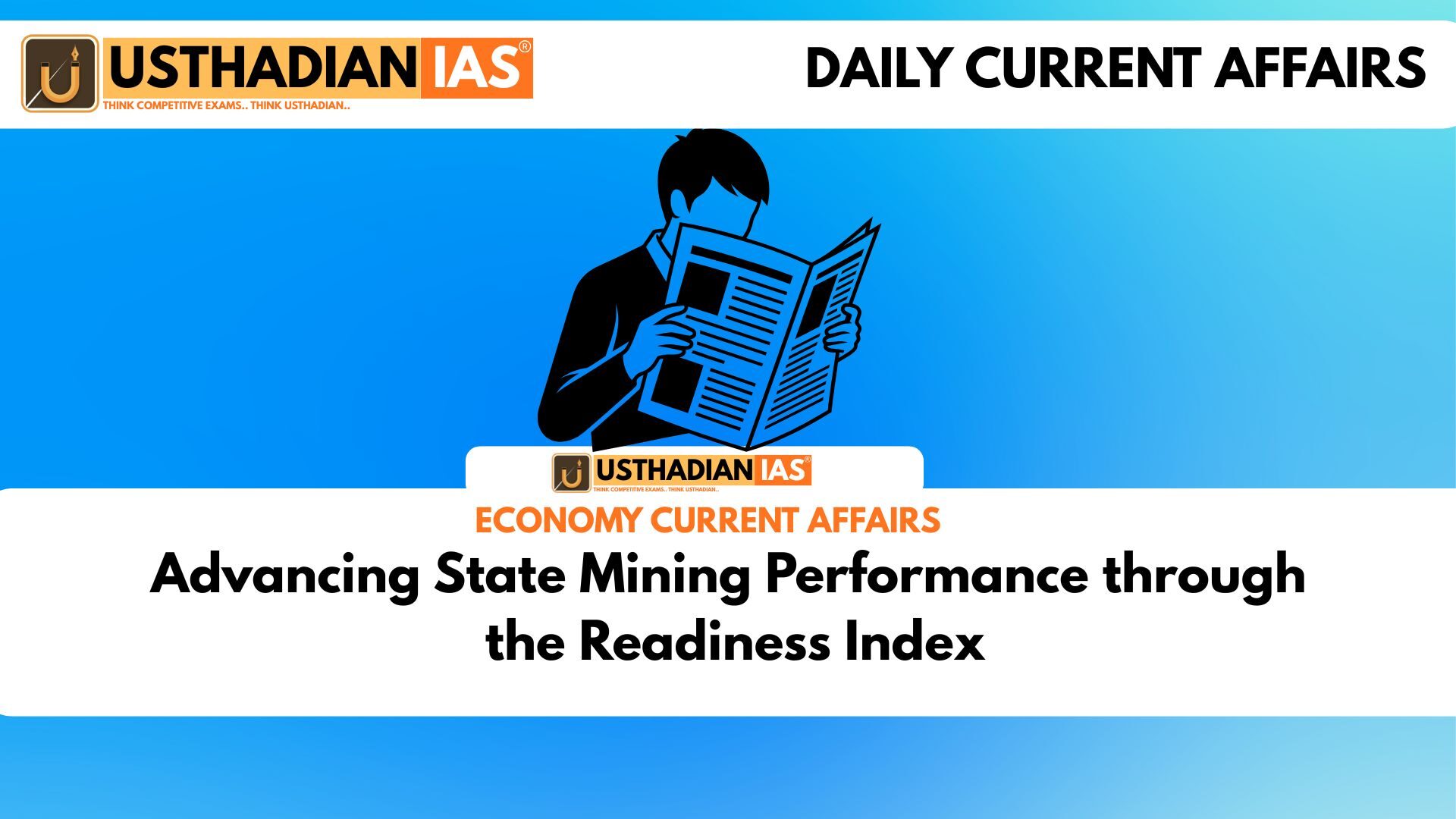Understanding the State Mining Readiness Index
Advancing State Mining Performance through the Readiness Index: The Ministry of Mines has introduced the State Mining Readiness Index (SMRI) to evaluate how effectively Indian States contribute to the national mining ecosystem. It is designed to encourage reforms and competitiveness within the mining sector by ranking States based on their readiness and performance.
Static GK fact: The Ministry of Mines is responsible for the survey, exploration, and development of all minerals (excluding coal, natural gas, and petroleum).
Objective and Purpose
The primary objective of the SMRI is to assess a State’s relative contribution to developing India’s mining industry. It promotes transparent policy frameworks, efficient resource utilization, and sustainable mining practices. The index serves as a benchmarking tool for both policymakers and investors to gauge a State’s potential for mineral development.
Basis of Evaluation
The index evaluation is based on four key parameters — auction performance, early mine operationalization, exploration thrust, and sustainable mining practices for non-coal minerals.
Each parameter reflects how well a State performs in ensuring effective governance, timely utilization of mining leases, and responsible extraction of resources.
Static GK Tip: India ranks among the top five producers globally for minerals like iron ore, bauxite, and mica.
Classification of States
To ensure fair comparison, States have been classified into three categories depending on their mineral endowment and geological potential.
- Category A: States with large mineral reserves and higher mining activity.
- Category B: States with moderate mineral potential.
- Category C: States with limited mineral resources.
This classification provides a balanced platform for assessing States with diverse geological advantages.
Top Performing States
In Category A, Madhya Pradesh, Rajasthan, and Gujarat emerged as the top performers, showcasing strong governance and mineral resource management.
In Category B, Goa, Uttar Pradesh, and Assam led the rankings due to their initiatives in exploration and operational efficiency.
Meanwhile, Punjab, Uttarakhand, and Tripura topped Category C, highlighting the growing mining momentum even in low-resource States.
Static GK fact: The Geological Survey of India (GSI), established in 1851, plays a vital role in mineral exploration across States.
Promoting Sustainable and Transparent Mining
The SMRI reinforces India’s commitment to sustainable mining, ensuring environmental conservation while maximizing mineral potential. It also supports the “Ease of Doing Business” initiative by simplifying mining processes and encouraging private investment in the sector.
The Index is a step toward aligning India’s mining framework with global best practices, fostering responsible resource extraction, and driving long-term economic growth through mineral-based industries.
Static Usthadian Current Affairs Table
Advancing State Mining Performance through the Readiness Index:
| Topic | Detail |
| Released by | Ministry of Mines |
| Objective | To assess and promote States’ contribution to mining sector reforms |
| Evaluation Parameters | Auction performance, early mine operationalization, exploration thrust, sustainable mining |
| Mineral Focus | Non-coal minerals |
| Classification Basis | Mineral endowment |
| Category A Top States | Madhya Pradesh, Rajasthan, Gujarat |
| Category B Top States | Goa, Uttar Pradesh, Assam |
| Category C Top States | Punjab, Uttarakhand, Tripura |
| Implementing Body | Ministry of Mines, Government of India |
| Static GK fact | Geological Survey of India established in 1851 for mineral exploration |








